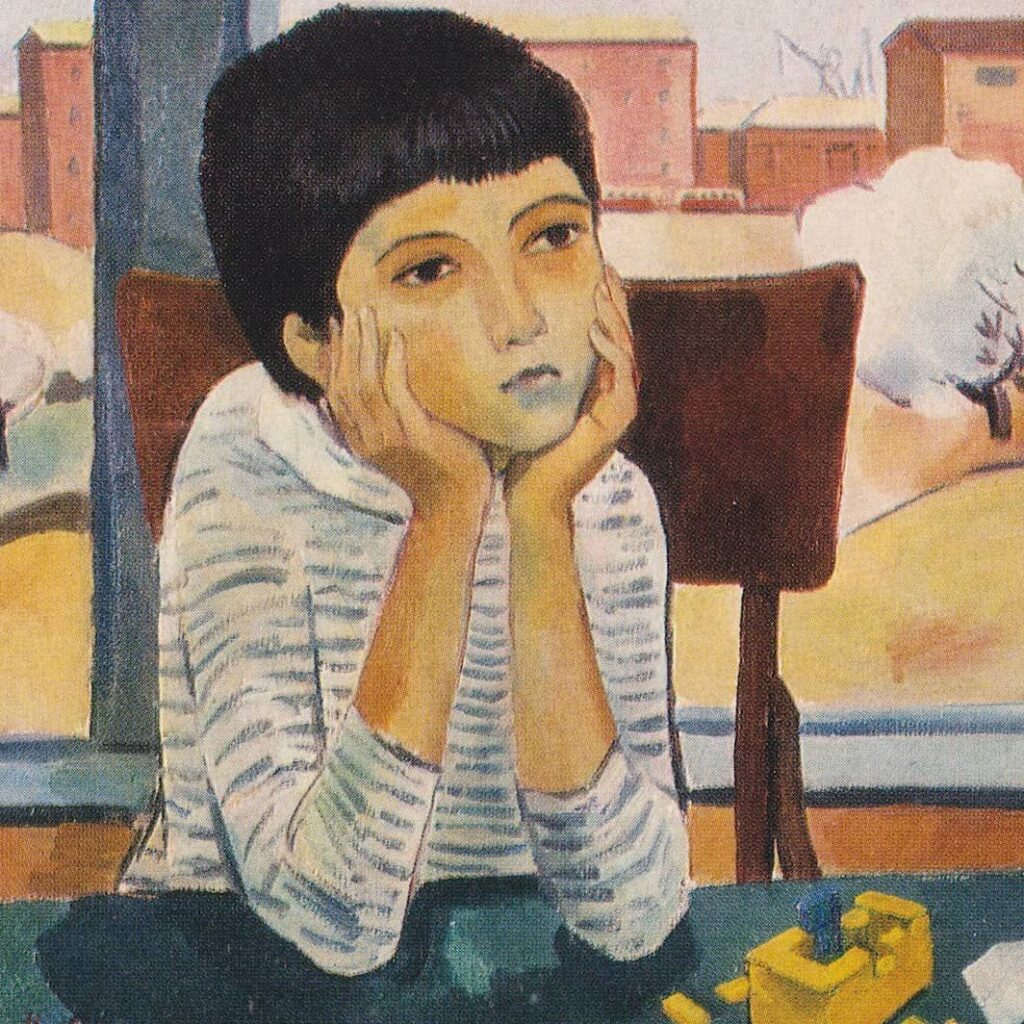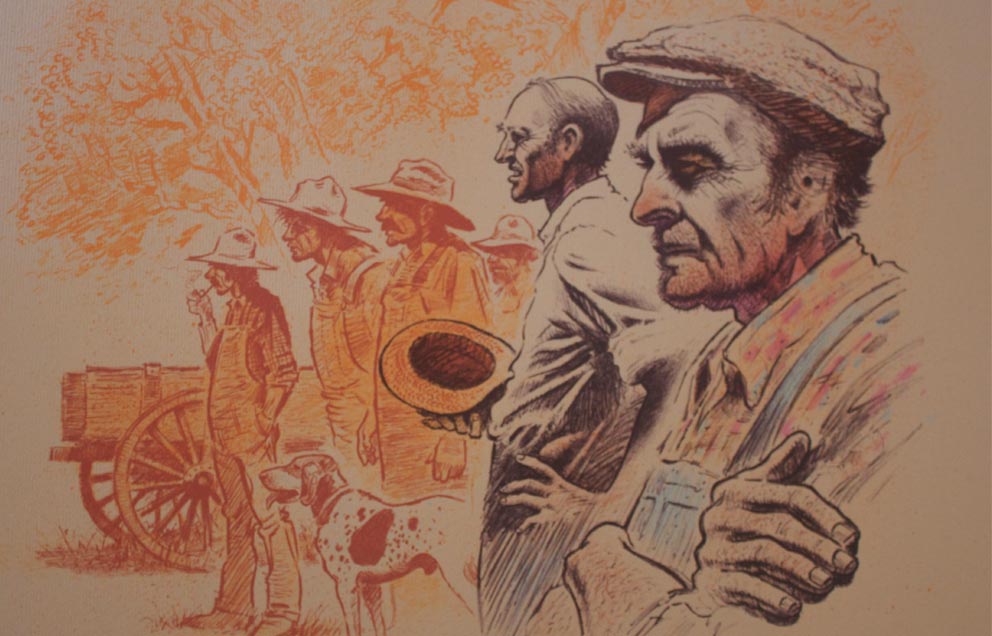My Name Is Aram
William Saroyan
1940
(An open and curious boy growing up in an Armenian community in California encounters the rich quirkiness of his family and neighbors.)

Writing from the spirit of memory. Not a record of specific memories, but effortless intuitive writing that naturally conjures the ethos, tinged with wistfulness, that can accompany the distant remembrance of simpler times. This was the inspiration of William Saroyan as he sat down, and boom, suddenly there appears what would become his best loved book of stories. With all the intense effort I put into my other books, this one (I’m imagining he thought), the one that practically wrote itself, the one in which I warned readers that nothing extraordinary would happen, this is the one?! In his own incredulous (or perhaps disingenuous) words, he “does not believe this manner of writing is the way to get a message to go high-rolling down the ages”. Its greatest value, he thought (not without satire), would be to disqualify him for membership in prestigious literary societies. One can understand why he was thinking this way. In the second half of the 1930s, having risen to the top of the charts, so to speak, with his debut collection of stories including “The Daring Young Man on the Flying Trapeze”, all eyes were on William Saroyan. Surrounded by the effervescing produce of Hemingway, Steinbeck, Faulkner, Fitzgerald, the pressure was on Saroyan to be likewise that great writer. And he did have such ambitions for himself. Yet, something drove him when starting My Name Is Aram to leave society’s gauntlet where it was thrown… or else maybe to find a different way to pick it up. My hunch (with hardly any evidence to back it up) is that he looked at this literary world he had entered, and decided that one helpful thing he could do right away is to center or root himself—to ask himself what had been important in making him who he is. Then, to search that out, or to convey it, he sat back and reminisced (pen in hand) about his humble early life in the immigrant Armenian fruit-growing community of the San Joaquin Valley, California. His goal was not to expose the suffering of the poor or rail eloquently against social ills, not to decry materialism or the threat of fascism, not to create a work of stylistic genious. Rather, his goal was simply to paint vignettes of the sorts of characters that were his family and neighbors in pre-Depression Fresno—to smile at them, to paint them in a sympathetic light, and to draw gently from them what practical wisdom and wit influenced his own development and might be worth preserving for others. Thus we have the young Aram Garoghlanian. And as the author says of himself, though he might not be Aram, he is certainly not not Aram.
Cimarron
Edna Ferber
1930
(The Oklahoma land rush of 1889 gives Yancey Cravat an opportunity to rescue his wife from civilized mediocrity, and head west for the untamed life of the pioneer.)

Yancey Cravat is the Cimarron—the wild one, like an aimless river or a jousting bighorn sheep. He may tote legal volumes as easily as a gun, and be as quick with a Shakespeare quote as with a trigger; and yes, he’s a lawyer and the editor of a socially active newspaper… but this is no milktoast city boy. This is Buffalo-Head, the tall, gruff, steel-eyed pioneer for whom three years in the same place or a single day without some sort of risk or conflict is evidently his idea of hell. And, no doubt, the wife of such a one is bound to be some kind of woman: Sabra, a sharp, spirited, strong, self-sufficient saber of a woman. In fact, although most assessments of this book will tell you that its permanence lies in its presentation to the world of the unforgettable Yancey Cravat, who is it that ties the book together? Whom does the narrative follow, when Yancey’s itchy traveling bone takes him to Alaska or the Spanish-American war? Not him, but the determined, toiling Sabra. Granted, she lacks the explosive flash of her husband–her way is much too pragmatic to put her in much danger or make her many enemies. But she is really the central character of the book, the one who grows, the one who succeeds in adapting herself to the various jolting cultural shifts that get thrown into her path by the errant Yancey, or by her son, or by the discovery of oil. At first entry into the fledgling land rush town of Osage, Oklahoma, fresh from the overprotection of her family the proper Venables of Wichita, she breaks into sobs when kissed by a stranger on the street. But give her eight or nine years, and she’s riding in the middle of the night into an Indian reservation during a mescal ceremony and demanding that her unconscious son be thrown onto her cart so she can bring him home. But of course, yes, we do want to hear about Yancey, despite… or maybe partly because of… his refusal to stick around. He’s idealistic, imposing, and indomitable. Take one particular tent meeting, for instance: in the course of giving a sermon, he manages to work in a self-defense killing—yes, the actual killing, not the story of a killing. And when warned that his pro-Indian editorials are going to get him killed, his reply is simply the unearthly death-scream of the Cherokee. (more…)
A Sand County Almanac
Aldo Leopold
1948
(An ecologist contemplates and celebrates the land, and recommends an expansion of our moral world.)

In today’s courses on ecology, forestry, conservation, environmental philosophy or land use, three personalities are routinely introduced as the fathers of modern concern for nature, the three who first and most strongly urged us to enlarge our conception of what in this world is a proper object of moral consideration: Henry David Thoreau, John Muir, and Aldo Leopold. Contemporary American (and to some extent world) culture has been impacted by A Sand County Almanac, as by Thoreau’s Walden, to such an extent that we cannot yet begin to assess it. Nevertheless, I would argue that we as a culture have still not attended to the two main lessons A Sand County Almanac would teach us.
Go Down, Moses
William Faulkner
1942
(Vivid tales from the deeply rooted McCaslin family of Mississippi explore the human desire to dominate others.)

Faulkner raises a novel, especially Go Down, Moses, like a mountain range. A small peak here, another one some indefinite distance to the side but nearer to the viewer, another apparently between them but actually much further in the distance. The slopes are irregular in grade, no shape is symmetrical, no sequence predictable. The greatest of the mountains has flanking foothills—here at least is order and intelligibility! One is prepared for the most gigantic landforms. Actually all of them, though apparently haphazardly arranged, are obviously part of a single landscape, each part depending on those around it for its qualities and significance. The notion that each mountain be viewed as an isolated individual, despite distinctions of personality and structure, is ridiculous. One best realizes this, perhaps, by receding somewhat from the view. For when close to it, when stumbling over craggy outcrops and struggling to circumvent gorges, the scene seems hopelessly chaotic and fragmented. Such is Go Down, Moses, a challenging and awesome range of tales.



Breakfast of Champions
December 15, 2014 / Leave a comment
Kurt Vonnegut, Jr.
1973
(Little do a frustrated writer and a troubled car dealer realize, that their impolite author is using their journey to meet each other as an excuse to mastermind a deconstruction of modern values!)
Sort of The Temptation of St. Anthony, sort of by Rabo Karabekian, 1950. Sort of Sateen Dura-Luxe acrylic wall paint and day-glo tape. 20 x 16 feet. This can sort of be seen in the Midland City Art Gallery, to which it was sort of sold by the artist for $50,000.
A Vonnegut novel grows on you… like an exquisite acquired taste… or else a nagging corn on the foot. All three experiences are underestimated at first, and with time a realization dawns that there is something here that cannot be ignored. Some deride Breakfast of Champions as one of his “lesser”, although more popular, novels. For my part, I think that here we have a wine that is initially very peculiar on the palate, and its apparent confusion will conceal the vibrant undertones if one is not careful to taste it slowly and carefully. Or else, here we have a blasted gadfly of a corn that starts insidiously in a part of the foot’s ball that is unlikely to feel it until the thing has incubated for a mighty long time, insinuating deeply into one’s tissues. And when finally noticed, ouch does that root go deep!
(more…)